
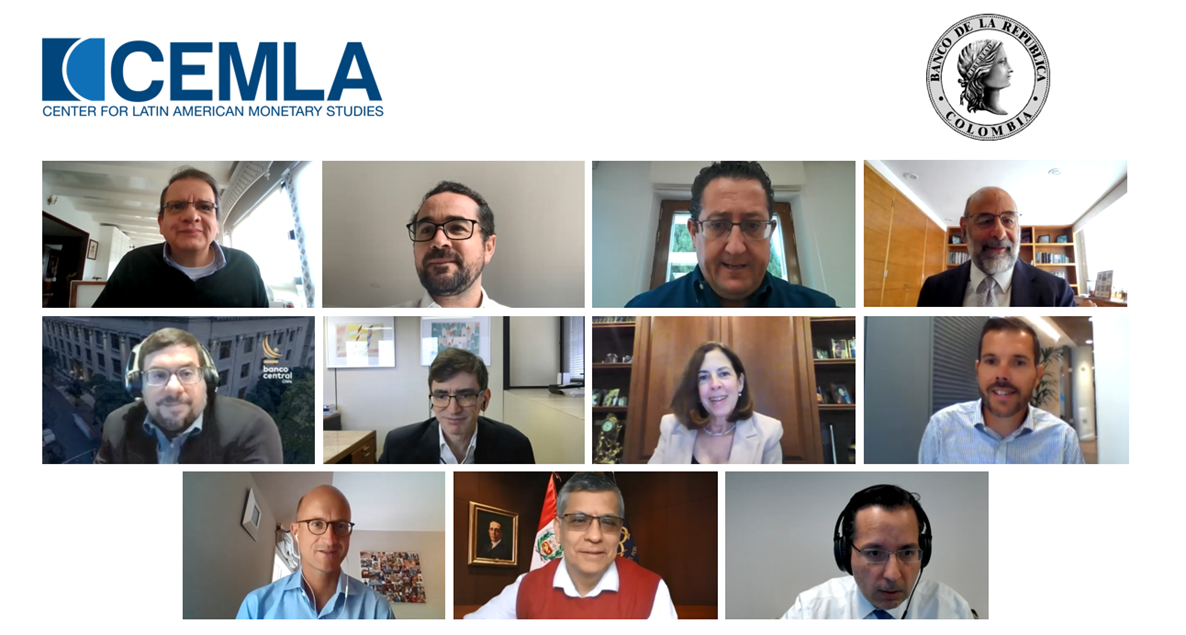
XVI Monetary Policy Managers (Digital) Meeting
CEMLA and Banco de la República
September 13 – 14, 2021
Videoconference
The XVI Monetary Policy Managers Meeting was held in digital format on September 13 and 14, 2021. It was jointly organized by the Center for Latin American Monetary Studies (CEMLA) and Banco de la República (Colombia). The Meeting was aimed at senior officials responsible for the design, execution, and analysis of monetary policy and researchers from CEMLA’s central banks membership. Its objective was to discuss the monetary policy challenges emerging market economies have faced during the times of COVID-19.
The Meeting began with the introductory remarks by Manuel Ramos-Francia, CEMLA’s General Director. He introduced one of the central questions of the Meeting: whether it is urgent to normalize monetary policy in Latin America? In this regard, he mentioned that the key issues include the U.S. inflation and the difficulty in reading inflationary and market conditions given the COVID-19 crisis. In this context, he stated that the current perception is that the U.S. inflationary spike has been largely a transitory phenomenon. In addition, he commented on the Federal Reserve’s announcement on the separation of the changes in the Federal Funds Rate and the tapering of the asset purchases and the initial focus it will have on the latter. While this has shown to be an aspect that has benefited emerging market economies, key issues remain, such as the timing, pace, and mechanics of it. On another note, he emphasized that, while financial markets conditions have been stable, largely due to central banks’ swift monetary policy response, Latin American Economies have started to face high inflation. Dr. Ramos-Francia emphasized that policy-making in the region should be cautious because inflation persistence might be partly explained by structural problems. Moreover, he underscored the historic monetary policy accommodation and its effects on the pace of the economic recovery. He concluded stating that policymakers will need to pay special attention to financial market operations in order to avoid cliff effects in the context of the normalization of monetary policy.
Dr. Ramos-Francia was followed by Juan José Ospina, Chief Officer of Office for Monetary Policy and Economic Information at Banco de la República (Colombia), who gave some brief remarks, in which he highlighted that, while the pandemic has been a global shock with heterogeneous consequences across regions and individuals, spaces like the Monetary Policy Managers Meeting often remind us about the uncertainty the pandemic entails, and the development of policy responses to confront it. Finally, considering the challenges ahead, Mr. Ospina invited the speakers and audience to actively participate in the exchange of experiences and discussions in order to learn from each other.
The first session of the Meeting, Monetary Policy, A Bird’s-Eye View, was dedicated to reviewing the experiences of Advanced Economies (AEs). The first presentation: Monetary Policy and its Perspectives in Advanced Economies was delivered by Óscar Arce, Director General for Economics, Statistics and Research at Banco de España.
His presentation was divided into four topics. First, he pointed out the large heterogeneity in the economic recovery and vaccination rates of AEs. Also, regarding the sharp increases in inflation, short-term inflation projections, and medium-term expectations, in some AEs were largely explained by transitory factors—bottlenecks in supply chains and the recovery of consumer demand—although long-term inflation expectations remain anchored. Second, he described the European Central Bank's (ECB) new monetary policy strategy and talked about ECB monetary policy prospects. Third, he briefly reviewed the U.S. macroeconomic prospects and commented on the Federal Reserve's stance, which is expected to remain patient with the normalization of policy rates, although the tapering of asset purchases is planned to start at the end of 2021. Finally, he talked about the macroeconomic outlook of other advanced economies and commented that the normalization of the monetary policy is expected to continue throughout the rest of the year (Norway and Sweden), 2022 (Canada and England), or even 2024 (Australia). Dr. Arce concluded his talk by stating that, although, with some differences among them, AEs share a scenario of temporary inflation spikes and a medium-term recovery. However, the risk of more persistent supply chain bottlenecks and second-round effects should not be overlooked as it could lead to a tightening of monetary policy stances in AEs and EMEs in a context of higher public and private debt.
Dr. Arce was followed by Dr. Ramos-Francia, who provided, in his presentation: How Urgent is Normalizing Monetary Policy in Latin America? a reading of the main indicators to characterize the global and regional contexts. First, he presented the case of the United States. He started by highlighting the atypical nature of the U.S. recession in the context of the COVID-19 pandemic, as it was largely induced by the shutdown of the economy in order to control the propagation and the effects of the virus. Therefore, the recovery has been driven by the gradual reopening of the economy. He then continued to analyze some of the main U.S. macroeconomic indicators and commented on the Fed’s monetary policy prospects. Then, he reviewed the inflation dynamics of some countries in the region and the factors that have partaken in the increase of inflation with the use of Principal Component Analysis among which he mentioned: the first component that appears to be related to global liquidity—with a greater influence for Brazil, Colombia Chile and Peru—and the second component that shows co-movements with commodity and energy prices—that has had a greater and positive impact for Mexico and the US, and a negative impact for Brazil. Finally, he talked about the main challenges for central banking in the region, for which he underscored: (i) the heterogeneous regional recovery, (ii) the significant degree of monetary accommodation, (iii) the high increase in inflation relative to pre-pandemic trajectories, (iv) shifts and slope-changes of yield curves, (v) the gradual withdrawal of unconventional stimulus avoiding cliff effects and gradually raising the reference rate, and (vi) dealing with the effects of market failures and structural issues.
The second session, Monetary Policy in EMEs in the times of COVID-19, started with the presentation Monetary Policy in times of Covid-19 of Daniel Chiquiar, former Director General of Economic Research at Banco de México. His presentation proposed an analysis of the challenges and dilemmas in the economic recovery and the transition to a post-pandemic economy, as well as its possible implications for monetary policy, through the perspective of emerging market economies, based on the Mexican experience. The economic consequences of the COVID-19 pandemic could be interpreted as the combination of three shocks: (i) a financial shock that implied capital outflows, increases in risk premiums and exchange rate depreciations for EMEs, (ii) a supply shock that was caused by confinement restrictions, and (iii) a demand shock—driven by the changes in consumer spending decisions, which swayed away from services and other activities that implied a higher degree of social interaction. Mr. Chiquiar stated that the combination of these shocks, its impact on inflation has been mixed and mentioned that, while for some AEs and EMEs, the magnitude of the shocks exhibited negative output gaps with decreases in inflation during 2020, the Mexican experience differed, having a negative output, but its inflation gap remained systematically positive. Regarding the potential upcoming risks of the transition to a post-pandemic world, he concluded by listing a few of the challenges emerging economies could face: the increase in the aggregate demand, the current supply shock affectations, the risk of volatility in financial markets, and the risk of a more persistent inflation scenario in advanced economies—and thus, a more rapid tightening of their monetary stance. Therefore, although slack conditions remain, emerging economies monetary authorities could face an acceleration for the withdrawal of its accommodative stance.
Then, Miguel Fuentes, Manager of International Analysis of Banco Central de Chile, delivered Monetary Policy and Economic Perspectives in Chile. He explained that Chilean economic activity has recovered to pre-pandemic levels due to businesses and individuals’ adaptability, the progress of the vaccination campaign, and the largest deployment of effective policy measures to contain the crisis. Moreover, these efforts have also translated into the rises of business and consumer confidence indicators. Nonetheless, economic and political uncertainty remain above their pre-pandemic levels. Mr. Fuentes proceeded to state that although supply has yet to fully recover, there has been an increase in inflation and its short-term expectations mostly due to the increase in demand, largely explained by the high accumulation of pension funds withdrawals and fiscal measures and the increase in fuel and oil prices. In this context, the Chilean peso has also depreciated and long-term interest rates have increased. He concluded his presentation by briefly reviewing the policy response of the Central Bank of Chile in order to avoid the accumulation of macroeconomic imbalances which, among other consequences, could lead to a more persistent increase in inflation.
André Minella, Head of the Research Department of Banco Central do Brasil, followed with his presentation entitled Monetary Policy in Brazil in Extraordinary Times. Mr. Minella explained that the Brazilian economy has been hit hard by the Covid-19 pandemic, but the policy response, which involved a combination of monetary, fiscal, credit, FX, liquidity, and capital measures, has been significant. For instance, the monetary policy rate (Selic rate) was reduced to historical lows, as inflation projections and expectations fell significantly below-target levels. He briefly explained the credit and liquidity support measures as well as the fiscal policy response and emphasized they have been greater compared to other EMEs and have facilitated a faster economic recovery. In turn, the Brazilian public debt has increased, although less than what the market expected in 2020 and overall, currently the market expectations for gross government debt appear to be stable and lower than their levels in the last quarter of 2020. For its part, Brazilian economic activity has rebounded to pre-pandemic levels. However, the labor market has given mixed signals about its recovery as both net formal job creation and the unemployment rate have increased. Inflationary pressures are higher than in the pre-pandemic period as a result of the economic recovery, a surge in commodity prices, shortages of raw materials that affected production, and the Brazilian energy crisis caused by the drought. Thus, inflation projections and expectations have increased significantly. As a result, the Brazilian Central Bank started raising the Selic rate in March from 2.00% to 5.25% to curb inflation pressures and tame inflation expectations. Mr. Minella wrapped up his remarks deeming a quicker monetary adjustment to be most appropriate to guarantee the anchoring of inflation expectations.
The first day of the Meeting concluded with the third session, a Keynote Presentation, delivered by Linda Goldberg, Senior Vice President, Research Group Policy Leadership of the Federal Reserve Bank of New York. In her talk, Volatile International Capital Flows and Central Bank Actions, she discussed some of the patterns observed in capital flows and actions taken by the Federal Reserve Bank given the development of global dollar funding markets after the COVID-19 shock. Regarding the patterns of capital flows, she emphasized that cross-border lending increased its volatility—especially for non-bank borrowers, external debt flows increased for bank and non-bank borrowers in advanced economies in comparison to emerging market economies. On the drivers and vulnerabilities of capital flows, she stated that during the pandemic, while banks have shown a better risk absorbing capacity, the interaction of banks with the magnification of risk shocks in emerging market economies’ borrowers seems to be more important relative to borrowers in advanced economies. The global liquidity response to U.S. monetary policy increases when key global currency shows similar monetary policy responses. Additionally, risk sensitivity to market-based finance increased after the Global Financial Crisis. She concluded by reviewing some of the Federal Reserve actions—swap lines and FIMA repo facilities—taken during the pandemic in the light of the increased dollar demand and some pending questions to address the narrow access to dollar liquidity backstops.
The second day of the meeting continued with a series of keynote presentations. The fourth session started with The Rebirth of Inflation? by Neil Shearing, the Chief Economist of Capital Economics. In it, he highlighted the following issues: the extent to which this year’s rise in inflation has been transitory, the effects of the pandemic in the aggregate demand, and the possibility of a weakening of the structural disinflationary factors of the 1990s and 2000s and their impact in different economies. According to Mr. Shearing, the main factors that contributed to the 2021 rise of inflation have been the rebound of global energy prices, supply shortages, the pick-up of re-opening inflation, and cyclical factors. However, he considers that these are likely to be short-lived. Then, regarding the question of whether aggregate demand will surge, he mentioned that, in contrast to the 2008 Global Financial Crisis, central bank asset purchases have come alongside a loosening of fiscal policy and an increase in household savings, thus, reducing the risk of an unanticipated surge in spending. Next, he mentioned how some of the structural forces that contributed to low inflation in past decades had weakened—and listed some examples such as globalization, demographics, the arrival of new costs for firms, and the change of attitude towards inflation of governments and central banks—, while some others such as the flexibility of labor markets, anchored inflation expectations at low levels, and structural changes persist as deflationary. He concluded by mentioning that, while the increase of inflation is likely to be transitory, the risk of a period of higher medium-term inflation is higher now than any time in the last 30 years.
The second presentation, EM Capital Flows Another Taper Tantrum? was delivered by Robin Brooks, Managing Director and Chief Economist of the Institute of International Finance. His presentation revolved around financial markets and international markets’ risks regarding the unprecedented policy measures during COVID-19 crisis and the path towards normalization and its implications for Emerging Markets. He divided his presentation into three parts: (i) a brief discussion of the drivers of capital flows in emerging economies, (ii) a comparison between the initial conditions of the Fed’s withdrawal of facilities granted in 2013—pre-Taper Tantrum—as opposed to what we see today in 2021—in light of the withdrawal of the facilities granted in the pandemic—, and (iii) the tantrum risk and a discussion of the U.S. Bond Market—the most important issue, as it is the biggest source of vulnerability for EMEs and it is where signals are most potentially worrying.
Mr. Brooks gave a brief review of the taxonomy of global and local drivers of capital flows and then presented empirical observations on emerging economies flows data in 2020. In a comparison between the “Taper Tantrum” in 2013 and the Market Turmoil in 2021, Robin Brooks stated that presently there are more favorable conditions as current accounts deficits are smaller, real exchange are less appreciated, and external financing needs are smaller. Finally, he explained the “market tantrum” risk for 2021 and stated that the current rhetoric has been different as there had not been any comments on the hikes of interest rate. Nonetheless, he cautioned about the data surprises in bond markets—which have been larger in 2021 than in 2013 in terms of changes in 10-year U.S. Treasury yields and bonds sensitivity and how this observation exhibits the inability of expectations to predict the reopening.
The last keynote presentation was Bond Flows-at-Risk: Global, Local, and Pipe Factors in Latin America by Manuel Ramos-Francia. Motivated by the inflection point that the global financial crisis represented for emerging economies’ capital inflows in terms of volatility and the change in the nature of the agents involved—where non-bank financial intermediaries have now increased their participation—, Ramos-Francia et al. study, for the case of Brazil, Chile, Colombia, Mexico, and Peru, the distribution of bonds and its determinants—paying particular attention to the pipes factor—while also exploring the possibility that the global factor may be subject to regime changes. Dr. Ramos-Francia gave a rundown of the variables used in their study to measure each factor, namely: the VIX index, term-premium spreads to measure the global/push and local/pull factors respectively, as well as the changes in international reserves, the share of local currency-denominated government bonds held by non-resident investors, and EMEs trading volumes to measure the pipes factor. Their main results show that both the VIX index and the term-premium spreads have a negative relationship with the distribution of bond flows and both increase the bond flows-at-risk (BaR). For the pipes’ variables, Dr. Ramos-Francia showed that increasing international reserves improves the distribution of bonds and reduces BaR while increasing the proportion of local currency-denominated government bonds held by non-residents worsens it.
The fifth session was dedicated to the continuation of the presentations of Monetary Policy in EMEs in the times of COVID-19. In Monetary Policy Response to Covid in Colombia and its Macroeconomic Outlook, Juan José Ospina made a brief review of the Colombian economic context prior to the COVID-19 pandemic, where he argued that although Colombia was in a good position in terms of economic growth, consumption and private investment, it showed a moderately-high debt-to-GDP ratio due to two shocks—the fall in oil prices and the increase in migration—which had a negative impact on public finances. In light of this, the monetary policy response to the COVID-19 shock had to be gradual. Mr. Ospina then continued his presentation by describing the current context and forecasts for the Colombian economy. He concluded by listing the four challenges that are likely to be faced in the future: (i) the assessment of the recent increase in inflation and its effects on expectations, (ii) discerning the labor market dynamics and the correct measurement of the degree of slack in the economy, (iii) the effect of the pandemic on potential GDP growth, and (iv) whether or not fiscal policy will become an issue for monetary policy.
The last presentation of the Meeting was delivered by Adrián Armas, Central Manager of Economic Studies / Chief Economist at Banco Central de Reserva del Perú (BCRP), with a title Monetary Policy Response and challenges to COVID-19. He began his presentation by reviewing the pre-pandemic context in Peru where, overall, inflation was within the target range with low volatility and economic growth rate was high. He then described the measures taken in Peru in the face of the pandemic. He stressed that it was one of the countries with the strictest quarantine restrictions and, thus, the output drop was severe. On the monetary policy side, the BCRP lowered its interest rate to 0.25 and conducted several measures to guarantee liquidity, including repo operations. On the BCRP response to the recovery environment, he indicated that given an increase in inflation to 4.95%, it has increased the interest rate to 1% in September 2021. Mr. Armas listed some of the challenges that lie ahead, namely: that monetary policy actions must remain preventive and fine-tuned to avoid the de-anchoring of inflation expectations and the interruption of the recovery, the uncertainty that persists regarding the control of the pandemic, and the heterogeneity among sectors that is present in the post-pandemic economic recovery. He concluded his talk by stating that, despite the challenges ahead, macroeconomic fundamentals remain solid.
The Meeting concluded with a discussion session moderated by Manuel Ramos-Francia and the participation of Daniel Chiquiar—Director General of Economic Research at Banco de México—, Miguel Fuentes—Manager of International Analysis of Banco Central de Chile—, André Minella—Head of the Research Department of Banco Central do Brasil—, Juan José Ospina—Chief Officer of Office for Monetary Policy and Economic Information at Banco de la República (Colombia)— and Adrián Armas—Central Manager of Economic Studies / Chief Economist at Banco Central de Reserva del Perú—that revolved around several topics, such as their views on the inflation, the evolution and term structure of interest rates in the U.S., whether or not they considered that monetary and/or fiscal stimulus has been excessive, the historically-low monetary policy rate levels the region has been showing, the increase of term premiums and its sources of risk, the influence of the organizational structure or sectoral composition on the persistence of inflation, whether they consider that their experience with unconventional monetary policies is showing to be inflationary—and if so, their strategies planned for the withdrawal of the granted facilities—, and lastly, their views on the effectivity of monetary policy on inflation through the interest rate channel in terms of intertemporal substitution of consumption, among other relevant topics.
September 13, 2021
Introductory Remarks
Manuel Ramos-Francia, General Director, CEMLA.
Remarks
Juan José Ospina, Chief Officer, Office for Monetary Policy and
Economic Information, Banco de la República (Colombia).
Session I. Monetary Policy, A Bird’s-Eye View
Monetary Policy and its Perspectives in
Advanced
Economies
![]()
Óscar Arce, Director General for Economics, Statistics and Research,
Banco
de España.
How Urgent is Normalizing Monetary Policy in Latin
America?
Manuel Ramos-Francia, General Director, CEMLA.
Session II. Monetary Policy in EMEs in the times of COVID-19
Monetary Policy in times of Covid-19
Daniel Chiquiar, Director General of Economic Research, Banco de
México.
Monetary Policy and Economic Perspectives in Chile
![]()
Miguel Fuentes, Manager of International Analysis, Banco Central de
Chile.
Monetary Policy in Brazil in Extraordinary Times
![]()
André Minella, Head of the Research Department, Banco Central do
Brasil.
Session III. Keynote Presentations
Volatile International Capital Flows and Central Bank
Actions
Linda Goldberg, Senior Vice President, Research Group Policy Leadership,
Federal Reserve Bank of New York.
September 14, 2021
Session IV. Keynote Presentations (continues)
The Rebirth of Inflation?
![]()
Neil Shearing, Chief Economist, Capital Economics.
EM Capital Flows Another Taper Tantrum?
![]()
Robin Brooks, Managing Director and Chief Economist, Institute of
International Finance.
Bond Flows at Risk in Latin America
Manuel Ramos-Francia, General Director, CEMLA.
Session V. Monetary Policy in EMEs in the times of COVID-19 (continues)
Monetary Policy Response to Covid in Colombia and its Macroeconomic
Outlook
Juan José Ospina, Chief Officer, Office for Monetary Policy and Economic
Information, Banco de la República (Colombia).
Peru: Monetary Policy Response and challenges to
COVID-19
Adrián Armas, Central Manager of Economic Studies / Chief Economist,
Banco Central de Reserva del Perú.
Session VI. General Discussion. Monetary Policy Challenges and Outlook
Chair: Manuel Ramos-Francia (CEMLA).
Participants
Daniel Chiquiar (Mexico)
Miguel Fuentes (Chile)
André Minella (Brazil)
Juan José Ospina (Colombia)
Adrián Armas (Peru)
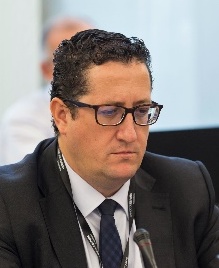
Óscar Arce
Óscar Arce is the Director General of Economics, Statistics and Research at Banco de España, where he also has served as Associate Director General of Economics and Research, Director of Monetary and Financial Studies and as the Head of the Macroeconomic Analysis and Forecasting Division. Previously, he was the Director of the Research and Statistics Department at the Spanish Securities Markets Commission (CNMV), Deputy Director General at the Economic Bureau of the Spanish Prime Minister and Senior Economist at the Banco de España.
Mr. Arce holds a PhD in Economics from the London School of Economics and Political Science and a MSc Economics from University College London. He is an alternate member of the European Central Bank’s Governing Council, member of the ECB’s Monetary Policy Committee, and member of the EU’s Economic and Financial Committee. Before, he was involved in the work of several international bodies, including the European Securities and Markets Authority (ESMA), the European Systemic Risk Board (ESRB), and the International Organization of Securities Commissions (IOSCO).
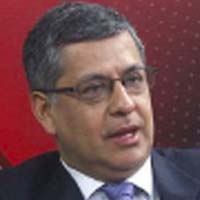
Adrián Armas
Adrián Armas has been Chief Economist of the Central Reserve Bank of Peru (BCRP) since 2005, except 2017-2018, when he was the Executive Director for Argentina, Bolivia,Chile, Paraguay, Peru, and Uruguay at the IMF Board. He has spent most of his career (since 1986) at the BCRP, where he was previously Head of the Monetary Policy Division (1997-2005) and Chief of the Financial Programming Section (1995-1997). He contributed to the design and implementation of Peru’s inflation targeting scheme and has written articles on this subject and others on central banking for the IMF, BIS, the LACEA Journal, and several central banks. He participated in IMF technical assistance missions as MCM Advisor in 2007-2017. He has taught Econometrics, International Economics, Macroeconomics, and Monetary Theory at several Peruvian universities. He holds an M.A. degree in Political Economy from Boston University (1992).
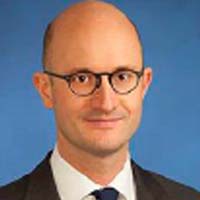
Robin Brooks
Robin Brooks is the Managing Director of Economic Research and the Chief Economist of the Institute of International Finance (IIF). In his role, he oversees the IIF’s macroeconomic analysis and serves as part of the IIF’s senior management team. Previously, he served as Chief FX Strategist at Goldman Sachs based in New York, where he was responsible for the firm’s foreign exchange forecasts and publishing international macro research. Prior to joining Goldman, Mr. Brooks was the FX strategist at Brevan Howard. Before joining the private sector, Mr. Brooks spent eight years as an economist at the International Monetary Fund, where he worked on the IMF’s fair value models for FX, published academic research and participated in missions to IMF program countries. Mr. Brooks earned his PhD in Economics from Yale University in 1998. He earned a BSc in Monetary Economics from the London School of Economics in 1993.
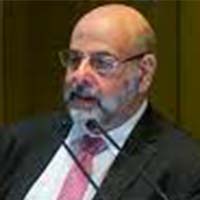
Daniel Chiquiar
Daniel Chiquiar is currently Director General of Economic Research at Banco de México. As Chief Economist of the Central Bank, he is the Chief Economic Adviser to the Governing Board. Among other responsibilities, he heads the Economic Research Division of Banco de México, leading and channeling the intellectual efforts aimed at contributing to the understanding of policy recommendations on current economic events and various issues such as growth, inflation, international trade, labor market, and monetary policy. Most of the research is used as the basis for recommendations to the Governing Board and is published in top academic journals.
He is an economist from the Instituto Tecnológico Autónomo de México (ITAM), where he graduated with honors in 1990. He later earned his Ph.D. in Economics from the University of California San Diego in 2003, majoring in international trade and macroeconomics. Most of his research has been published in top peer-reviewed academic journals in economics. He has also been professor at ITAM and Centro de Investigación y Docencia Económicas (CIDE) at the undergraduate and graduate levels. During his career, he has held professional appointments in both the private and public sectors. At Grupo BIMSA, he was appointed Vice President of Research, and later Director of Economic Policy in Mexico’s Ministry of Finance and Public Credit (SHCP). In 2003, he joined Banco de México as an Economic Researcher, advancing to his current position as Chief Economist.

Miguel Fuentes
Miguel Fuentes is the Manager of International Analysis at Banco Central de Chile. Previously he was Manager of Macroeconomic Analysis, Head of the Conjunctural Assessment Section of the Macroeconomic Analysis Unit and Senior Economist in the Economic Research Unit at Banco Central de Chile. He has also worked as a visiting researcher in the International Monetary Fund’s Research Department.
He was a Professor at the Economics Institute of the Pontificia Universidad Católica de Chile and Editor of the university’s Business Macroeconomic Report (Informe Macroeconómico para la Empresa) (1998–1999). He has also taught courses in macroeconomics, econometrics and international economics completed in the undergraduate and graduate programs at the Universidad Católica de Chile and the Universidad Alberto Hurtado.
Mr. Fuentes graduated as Commercial Engineer with a major in economics (1997). He holds a Master’s Degree in Applied Economics, specializing in applied macroeconomics, from the Pontificia Universidad Católica de Chile (PUC), (1998) and a Ph.D. in Economics from the University of California, Berkeley (2004).
He has participated in numerous national and international seminars and published papers in international academic journals and books, on topics including stabilization policy, exchange rate regimes, and international trade.

Linda Goldberg
Linda Goldberg is a Senior Vice President at the Federal Reserve Bank of New York. Ms. Goldberg’s main areas of expertise are global banking, international capital flows, and the international roles of currencies. She is the co-chair of the International Banking Research Network, Bank for International Settlements Technical Advisor, CEPR Distinguished Fellow, and an NBER Research Associate. Linda is co-editor of the International Journal of Central Banking and on editorial boards of the Journal of Financial Intermediation and Journal of Financial Services Research. She also is on board of the Central Banking Economic Research Association, advisory board of the Academic Female Finance Committee of the American Finance Association and is the Vice President of the Association of Princeton Graduate Alumni. Linda previously engaged with the World Economic Forum, including as chair and vice chair of the Council on Global Economic Imbalances.
Linda has a Ph.D. in Economics from Princeton University, and a B.A. in Mathematics and Economics from Queens College CUNY, where she graduated Phi Beta Kappa and Summa Cum Laude.

André Minella
André Minella is the Head of the Research Department (Depep) of the Central Bank of Brazil (BCB). The Department is responsible for i. conducting research in areas such as macroeconomics, banking, and financial stability; ii. developing macroeconomic and financial models, and iii. providing projections and macroeconomic scenarios for the Monetary Policy Committee (Copom). He also makes regular presentations to the Financial Stability Committee (Comef) meetings. André previously worked as the Head of the International Affairs Department of the BCB, where, among other things, he was responsible for providing analysis of the global economy for the Board. He also worked as Deputy Secretary for Economic Policy at the Ministry of Finance of Brazil. André holds a Ph.D. degree in Economics from New York University. André has conducted research on macroeconomic modeling, dynamic stochastic general equilibrium (DSGE) models, inflation targeting, inflation expectations, real-time data, and capital flows. He has publications in venues such as the NBER Macroeconomics Annual, Journal of International Money and Finance, Economic Modelling, and Empirical Economics. He has also worked as a consultant for the IMF in the areas of inflation targeting and macroeconomic modeling. He was also assistant professor at Pontifical Catholic University Rio Grande do Sul (PUCRS).
Juan José Ospina
Juan José Ospina joined Banco de la República (Colombia) in 2017. He currently is the Chief Officer for Monetary Policy and Economic Information, where he runs the team that produces the bank's macroeconomic analysis and forecasts, makes the monetary policy recommendation to the Board of Governors, and writes the Monetary Policy Report. He is also in charge of a labor market research team and the production of most of the bank's official statistics.
Prior to this role, he also worked as the head of the Fiscal Analysis Unit and as a researcher at the Macroeconomic Modeling Department. His research interests include monetary policy, business cycle fluctuations, asset pricing, pension systems, and the formation of consumer's expectations.
His research work has been published in academic journals including Econometrica and the Journal of Political Economy. He has taught courses in finance, macroeconomics, and statistics at the University of Chicago, Universidad de los Andes, Universidad del Rosario, Universidad del Norte, and Universidad Externado de Colombia. He holds a PhD in economics and an MBA (with honors) from the University of Chicago and bachelor degrees (with honors) in economics and industrial engineering from Universidad de los Andes.
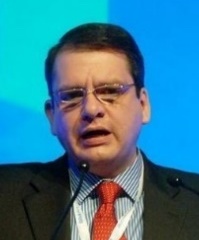
Manuel Ramos-Francia
Manuel Ramos-Francia has a B. A. in Economics (with highest honors) from the Instituto Tecnológico Autónomo de México (ITAM). He was awarded a Fulbright Scholarship for graduate studies in the United States. He holds a Ph.D. in Economics from Yale University, where he graduated in 1993, specializing in Advanced Economic Theory and Financial Economics.
He has been Professor of Economics, having taught Advanced Macroeconomics, Open Economy Macroeconomics, Monetary Theory and Policy, and Financial Economics, and Director of the Center for Analysis and Economic Research at ITAM in Mexico. Dr. Ramos-Francia has held several positions at the Ministry of Finance: Deputy Minister (for Revenues), Chief Economist, and Chief Adviser to the Minister of Finance. He joined Banco de México in 2001, first serving as a Senior Adviser to the Board, then as Director General for Economic Research (Chief Economist) and, from April 2011 to December 2018, as Vice-Governor and Member of the Board. Currently, he is the Director General of the Center for Latin American Monetary Studies (CEMLA).
He has given seminars at universities such as Yale Economics, Harvard Business, Harvard Law, Columbia Public Policy, the University of Chicago Business, and ITAM, among others. He has also given conferences and seminars at many central banks such as the Fed, the NY Fed, the Bank of Canada, the Bank of England, the Banque de France, and the central banks of Argentina, Ecuador, Jamaica, Peru, Guatemala, Turkey, and others, as well as at international financial organizations such as the IMF, the BIS, the World Bank, the IIF, and the IADB. Also, at organizations such as LACEA, LAMES, the International Economic Association (IEA), the Reinventing Bretton Woods Committee, and the Adam Smith Seminar. He has also been invited to be a member of the Bretton Woods Committee.
Manuel Ramos-Francia represented Mexico in the G20 Central Bank Deputies Group from 2010 to 2018. He was Chairman of the Deputies of the International Monetary and Financial Committee (IMFC) of the IMF from 2015 to 2017. Similarly, he presided over the Central Bank Deputies Group under Mexico's G20 Presidency in 2012. He was given the Professional Merit Service Award from ITAM in 2009.
He has published various articles on monetary policy, fiscal policy, trade and applied econometrics in refereed economics journals such as: Journal of Money Credit and Banking, Economics Letters, Journal of Financial Stability, and Quarterly Journal of Finance, and many others, as well as in specialized books. He has refereed for journals such as: Journal of Money, Credit and Banking; Empirical Economics; Review of World Economics; International Journal of Economic Sciences and Applied Research; The World Economy, and others. He is Editor-in-Chief of the Latin American Journal of Central Banking. Also, he was a member of the Association of the IJCB's (International Journal of Central Banking) Management Committee.

Neil Shearing
Neil Shearing is the Group Chief Economist and Director at Capital Economics. Prior to becoming Group Chief Economist, Neil was Chief Emerging Markets Economist and managed a team that won several awards for forecast accuracy. Before joining Capital Economics, he worked at HM Treasury as an economic adviser in various areas, including fiscal policy and global economics. He is also an Associate Fellow in the Global Economy and Finance Programme of Chatham House.
Neil’s main area of research interest is in analyzing and understanding structural shifts in the global economy. He presents regularly on the global economic and financial market outlook and is a well-known voice within the investment community. Neil has written articles in the Financial Times and a number of other newspapers, as well as appearing regularly on TV and radio.
He holds degrees in Economics from the University of York and the University of London and is a Fellow of the Royal Society of Arts.

